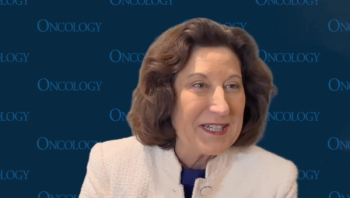
- Oncology Vol 28 No 1S
- Volume 28
- Issue 1S
(P125) Breast Cancer Outcomes With Anthracycline-Based Chemotherapy for Residual Disease Burden After Full-Dose Neoadjuvant Chemotherapy and Surgery Followed by Radiation Treatment
In breast cancer, the primary site residual burden of disease (PRBD) after neoadjuvant chemotherapy has been shown to correlate with poor prognostic outcomes. Currently, there is no established standard of care to offer patients with residual disease, in terms of adjuvant systemic treatment after full-dose neoadjuvant chemotherapy.
Parima Daroui, MD, PhD, Saud Siddiqui, BA, Nilam Ramsinghani, MD, Rita Mehta, MD, Lydia Su, PhD; University of California, Irvine
Introduction: In breast cancer, the primary site residual burden of disease (PRBD) after neoadjuvant chemotherapy has been shown to correlate with poor prognostic outcomes. Currently, there is no established standard of care to offer patients with residual disease, in terms of adjuvant systemic treatment after full-dose neoadjuvant chemotherapy.
Materials and Methods: We retrospectively analyzed data from patients treated on an institutional review board (IRB)-approved institutional protocol of neoadjuvant chemotherapy followed by surgery to determine whether patients with intermediate- or high-grade breast cancer, with T2 disease or greater, and with a PRDB greater than 0.5 cm demonstrate worse outcomes without further adjuvant systemic treatment.
Results: The review included 11 patients with breast cancer treated between 2007–2011 with neoadjuvant chemotherapy followed by mastectomy or lumpectomy and followed by adjuvant radiation treatment (RT). A total of five patients with PRBD greater than 0.5 mm received an additional 3–4 cycles of anthracycline-based chemotherapy after surgery, followed by RT. Six patients with PRBD greater than 0.5 mm had radiation alone after surgery with no additional chemotherapy. Four of the five patients receiving additional systemic treatment for PRBD and all patients treated with RT alone had triple-negative or human epidermal growth factor receptor 2 (HER2)-positive status. On preliminary analysis in a median follow-up of 31 months (range: 18–47 mo) for patients receiving chemotherapy and a median follow-up of 45 months (range: 18–68 mo) for patients receiving RT alone, there was no evidence of disease recurrence (local or distant), based on imaging or clinical examination in any of the 11 patients.
Conclusions: Although limited, these preliminary data may provide a basis for future studies to correlate disease outcomes and pathological data, including initial nodal disease burden and pathological response to treatment.
Articles in this issue
Newsletter
Stay up to date on recent advances in the multidisciplinary approach to cancer.















































































